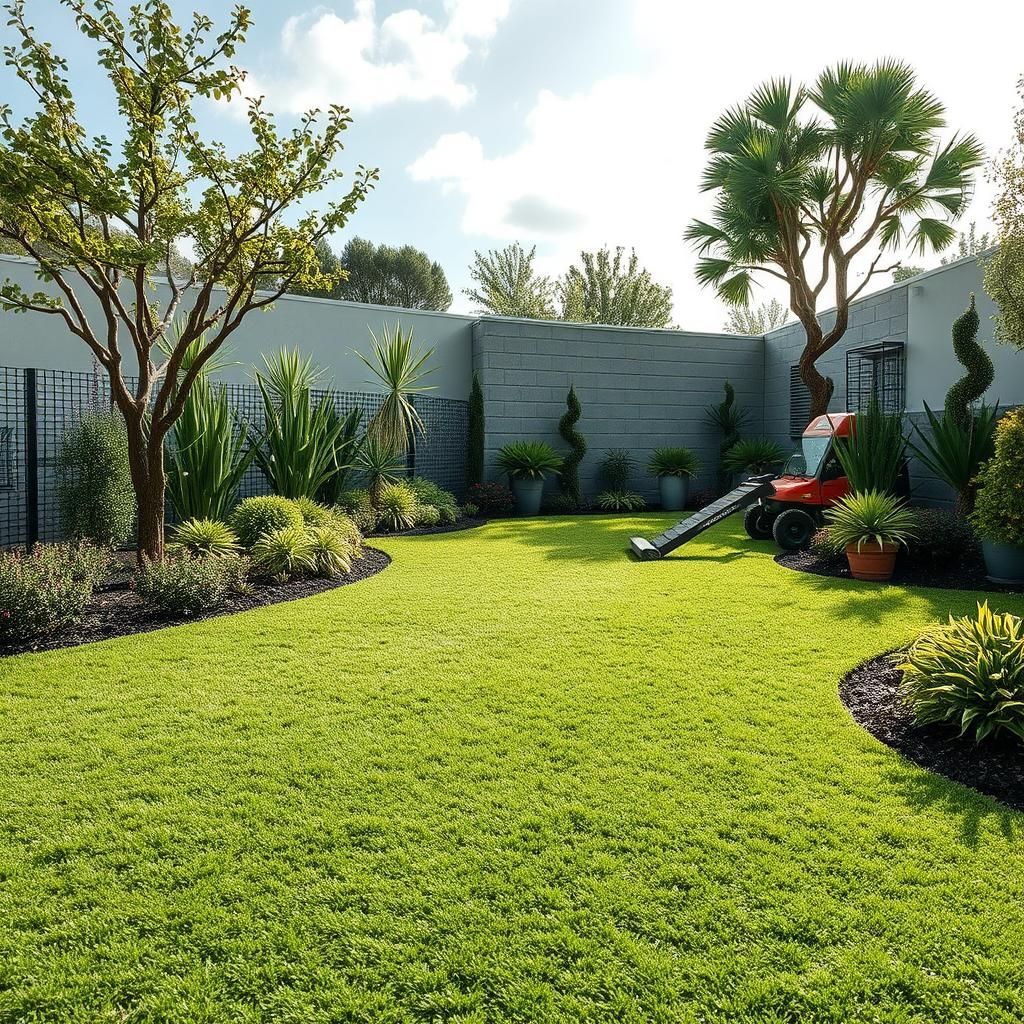10 Creative Ground Cover Lawn Alternatives for a Stunning Landscape

Creating a beautiful landscape often begins with the choice of ground cover. While traditional grass lawns are popular, they may not always be the best fit for every environment or homeowner’s lifestyle. Fortunately, there are numerous creative alternatives that can add both beauty and functionality to your outdoor space. From colorful flowering plants to low-maintenance succulents, these options can enhance your landscape while offering unique texture and visual interest. In this article, we’ll explore ten innovative ground cover alternatives that will transform your yard into a stunning retreat while also promoting sustainability and biodiversity.
Exploring Ground Cover Lawn Alternatives
Ground cover lawn alternatives are an excellent choice for those seeking to reduce lawn maintenance while enhancing the beauty of their outdoor spaces. These alternatives offer various benefits, including lower water usage, reduced mowing needs, and the ability to prevent soil erosion. Many ground cover plants are also self-sustaining and can thrive in different environmental conditions, making them suitable for a variety of climates and soil types. Additionally, selecting the right ground cover can attract pollinators, improve biodiversity, and create a pleasant aesthetic that outshines traditional grass lawns.
Benefits of Ground Cover Plants
Ground cover plants provide numerous benefits over traditional grass lawns, including reduced maintenance and water conservation. They typically require less frequent mowing and watering compared to grass, which can save homeowners both time and money. Furthermore, these plants can improve soil health by preventing erosion and promoting nutrient cycling, contributing to a healthier ecosystem in your yard.
Types of Ground Cover Alternatives
There are many types of ground cover alternatives suitable for various environments. Options such as Creeping Thyme, Clover, and Sedum are popular due to their resilience and aesthetic appeal. Other options, like Lamium and Ajuga, offer vibrant colors and textures, making them not only functional but also an attractive addition to your landscape. Each type of ground cover varies in growth habits, so it's important to choose one that fits your specific needs and conditions.
Choosing the Right Ground Cover for Your Climate
Selecting the right ground cover depends greatly on your local climate. For instance, areas with hot and dry conditions may benefit from drought-tolerant species like Blue Fescue or Moss Phlox. In contrast, humid regions might favor plants such as Creeping Juniper or Vinca Minor. Understanding your climate zone and soil type is vital to ensure the ground cover thrives in its environment, which can lead to a more sustainable and low-maintenance landscape.
See also:
How to Install Ground Cover Plants
Installing ground cover plants involves several key steps to ensure their success in your garden. Start by preparing the soil by removing any existing grass or weeds, and then amend it as necessary with organic matter. Plant the ground cover at the recommended spacing to allow for growth, and water them adequately during the establishment phase. Applying a layer of mulch can also help retain moisture and suppress weeds as the plants grow.
Maintenance Tips for Ground Cover Lawns
While ground cover plants generally require less maintenance than traditional lawns, some care is still needed to keep them healthy. Regular watering may be necessary during dry spells, particularly for newly established plants. Additionally, occasional trimming or weeding can help maintain their appearance and prevent overgrowth. Applying organic fertilizers occasionally can boost their health, especially if the soil is poor in nutrients.
| Ground Cover Option | Attributes | Ideal Conditions |
|---|---|---|
| Creeping Thyme | Drought-resistant, fragrant | Full sun, well-drained soil |
| White Clover | Low maintenance, attracts pollinators | Partial shade to full sun |
| Ajuga | Colorful foliage, low height | Shade to partial sun, moist soil |
| Creeping Juniper | Salt-tolerant, evergreen | Full sun, poor sandy soil |
| Vinca Minor | Vibrant flowers, effective ground cover | Partial shade, well-drained soil |
Exploring Unique Ground Cover Options for a Vibrant Outdoor Space
When considering ground cover alternatives to conventional grass lawns, it's essential to focus on options that not only enhance aesthetics but also contribute positively to the ecology of your garden. There are various fascinating choices available that provide vibrant colors, interesting textures, and the ability to attract beneficial insects. Selecting appropriate ground covers can lead to a low-maintenance landscape that conserves water and supports biodiversity. From sedums that thrive in sunny spots to shade-loving mosses, these alternatives can create visually stunning effects while minimizing lawn care efforts.
1. Creeping Thyme
Creeping Thyme is an excellent choice for homeowners looking for a fragrant and tough ground cover. This perennial herb thrives in full sun and poor soils, making it a resilient option. It produces tiny purple flowers that attract pollinators while providing a dense mat of greenery. Additionally, this low-growing plant withstands foot traffic, making it suitable for walkways or garden paths.
2. Irish Moss
Irish Moss is a charming option for shaded areas, forming a dense, lush carpet that offers a vibrant green hue. This hardy plant thrives in cool, moist environments, making it ideal for northern climates or under trees where grass struggles to grow. Its soft texture underfoot and small white flowers in spring provide a beautiful visual appeal, making it a popular choice for enhancing garden beds.
See also:
3. Sedum
Sedum is a versatile succulent that comes in various species, providing options for both sunny and dry conditions. Known for its drought tolerance, Sedum can thrive on poor, rocky soils, flourishing in places where traditional grass would fail. Its fleshy leaves and stunning summer flowers attract pollinators, while its ability to spread quickly offers an attractive ground cover that requires minimal maintenance.
4. Clover
Using Clover as a ground cover presents an eco-friendly alternative to conventional lawns. It enriches the soil with nitrogen, promoting a healthier landscape while remaining low-maintenance. Clover blooms with lovely white or purple flowers, providing nectar for various pollinators. Its natural resilience against pests and drought makes it a sustainable choice for those looking to reduce their chemical use on lawns.
5. Creeping Phlox
Creeping Phlox is a stunning option for creating vibrant color in your landscape. Known for its hardiness and ability to tolerate a variety of soil types, this perennially blooming plant features bright colors in shades of pink, purple, and white. With its dense growth habit, Creeping Phlox will help suppress weeds while providing a beautiful ground cover that flourishes in full sun and offers excellent drainage.
Questions from Our Readers
What are ground cover lawn alternatives?
Ground cover lawn alternatives refer to various types of plants and materials that can replace traditional grass lawns. These alternatives are typically low-maintenance, drought-resistant, and can provide aesthetic appeal to gardens and landscapes. Options may include clover, native grasses, moss, or decorative stones.
Why should I consider using ground cover instead of traditional grass?
Using ground cover instead of traditional grass can significantly reduce water usage, minimize the need for fertilizers and pesticides, and lower maintenance costs. Additionally, many ground cover options are more resilient to extreme weather conditions, making them a sustainable choice for various climates.
See also:
Are there specific types of ground cover suitable for shady areas?
Yes, several ground cover plants thrive in shady areas, such as hostas, ferns, and creeping thyme. These plants not only grow well with limited sunlight but also contribute to a lush, green environment, preventing weed growth and enhancing the overall visual appeal of shaded landscapes.
How do I maintain ground cover plants?
Maintaining ground cover plants typically involves less work than traditional lawns; however, it's essential to monitor their growth and ensure appropriate irrigation. Light trimming may be needed to control spread, while ensuring they get the right amount of sunlight and water will promote healthy growth and minimize pests.

If you want to read more articles like 10 Creative Ground Cover Lawn Alternatives for a Stunning Landscape, we recommend you check out our Landscaping category.
Leave a Reply
Related Articles